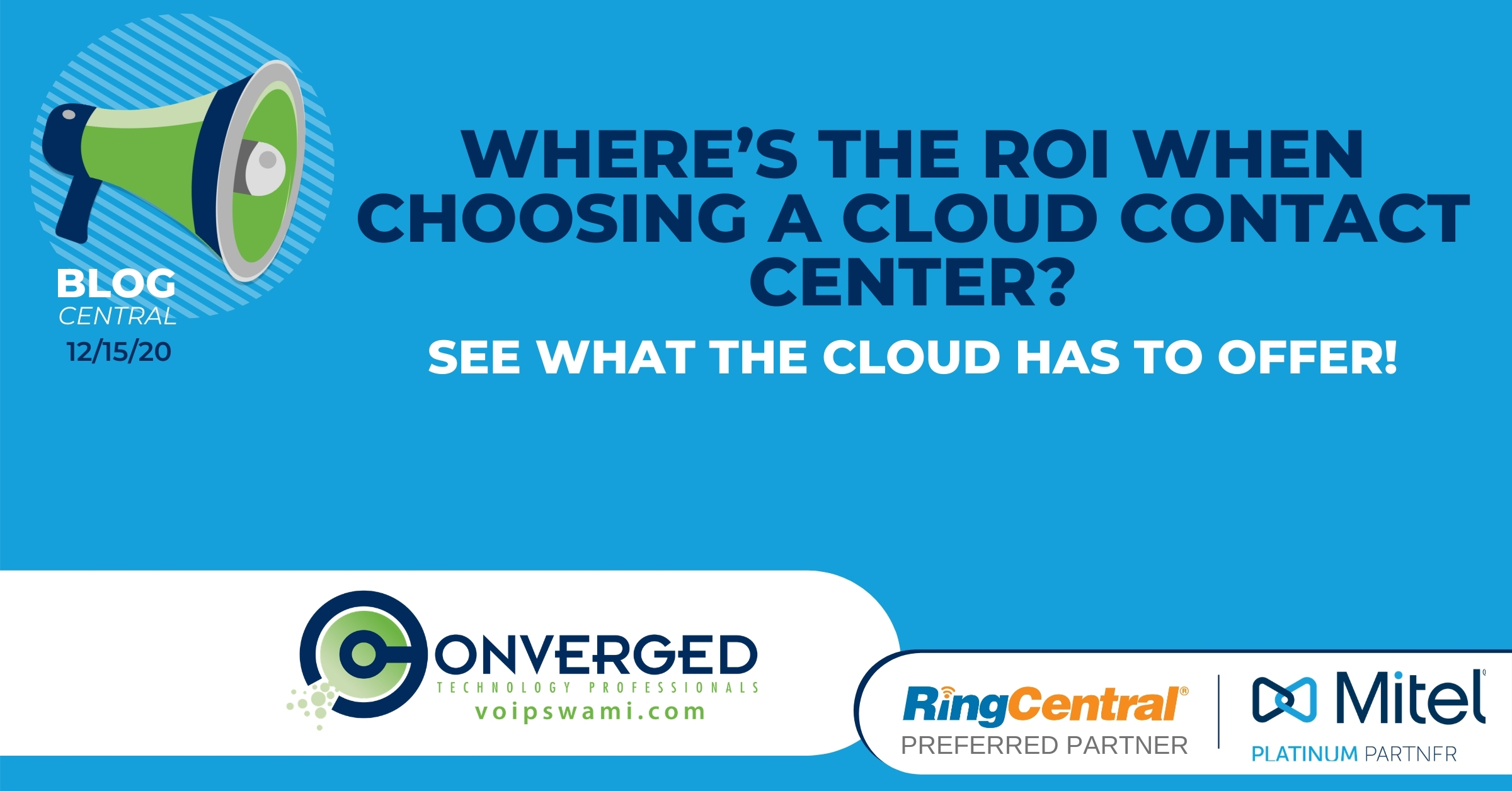
If you’re considered trading your on-prem legacy communications system for a cloud-based solution, you’re probably tasked with determining how the ROI compares. The ROI for on-prem systems is determined by the total cost of ownership and how the system ultimately pays for itself over time.
With a cloud solution, however, you still have upfront costs and you never actually own it. So, where’s the ROI?
The reality is that the ROI for cloud is measured and experienced differently than you on-prem legacy system. Here are multiple ways the cloud can still deliver a healthy ROI, far exceeding your on-prem pbx.
The Employee Productivity Problem
Most managers agree that employee productivity is an essential component of healthy ROI. But how can you encourage more productivity in your contact center? And does the cloud help?
One of the most powerful drivers of employee productivity is the measurement of employee engagement. If your contact center workforce is burnt out or unengaged, you’ll likely experience longer call times, lower customer satisfaction, and ultimately a decreased ROI.
In a survey conducted by the Aberdeen Group, contact center agents were asked about the most important factor for workplace engagement. The top answer, at 35%, was that the most important engagement factor was having the right technology at their disposal that simplified day-to-day tasks.
Why is the right tech so important for employee satisfaction and efficiency? The answer is actually quite simple.
Consider today’s sales and customer service landscape: Customers now reach out to contact centers through various channels, like email, chatbot, social media, phone and video chat. If all those mediums aren’t housed together in one platform, customers may be transferred across different systems, which slows down the support process.
How does this slow down productivity?
Because your employees must spend more time getting up to speed with the customer’s communication history that may not be readily available in the moment. Further, if there are disconnected data and communication systems, your agents will spend more time looking for information, which incurs unnecessary cost.
The Aberdeen Group estimates that contact center employees spend 17% of their work time searching for information. That is a very costly statistic for any consumer-focused business.
For example, let’s assume that the average labor cost at a 200 seat contact center is $50,000. 17% of that time is an incurred unnecessary cost of $1.7 million per year. Yikes!

How Cloud-Based Technology Improves Employee Engagement and Saves on Cost
Improved Productivity with Better Tech
Considering the close relationship between employee engagement, productivity and technology, your choice in communication system matters quite a bit. If you have outdated, disorganized, or disconnected systems, your contact center’s ROI will likely suffer. A cloud system streamlines your tech, reducing wasted cost and time while also driving employee engagement and productivity.
The Cloud Future-Proofs Your Contact Center
A cloud-based center gives you more flexibility when it comes to incorporating new solutions down the road. It offers more opportunities for things like automation, IVR and AI, which can drastically improve the customer and agent experience.
Cuts the Cost of Third-Party Apps
You can encompass more capabilities in a single, unified cloud-based PBX system which frees you from paying for multiple third-party apps. With faster call times, reduced spending on numerous apps, improved customer satisfaction and happier, productive employees, cloud-based technology offers contact centers a big opportunity to boost their ROI.
Decreased Hardware & IT Costs
Even the best hardware will break down every once in a while. If you are using a traditional on-premise communication system, you’re paying for upkeep, maintenance and potential fixes. You’ll likely need to hire an IT team to handle these issues. The costs can add up. Worse, if your system requires downtime for a fix, you can lose out on business or support calls.
By contrast, a cloud PBX system lifts the weight of this labor and expense off of your shoulders. The maintenance is taken care of by your service provider off-site and there is no need for installing large, sensitive equipment on location.
This frees up your IT team (and budget) to better allocate resources to other important areas of the business.
Mitigate the Risk of Business Interruption
It’s never fun to think about, but a sudden halt in business operations is quite possible due to factors beyond human control. As we’ve seen with the pandemic and other unprecedented events like wildfires and hurricanes, business-as-usual can be anything but usual.
Occasionally, disruption can come from more mundane causes like faulty PBX equipment that requires downtime during a fix.
A cloud-based VoIP system lowers the risk of significant disruption by design. Since it’s based in the cloud, all you need is an internet connection to keep your contact center running. You don’t have to fear on-site problems disrupting the flow of business; your staff can still take calls from anywhere and from any device (assuming you’re working with a reliable vendor) with an internet connection.
Lessening the risk of disruption means you can protect ROI in two areas:
1. Avoid revenue loss connected to a lull in operations.
2. Sidestep unnecessary expenses fixing on-premise issues.
The Cloud Delivers a Higher ROI
It might seem tempting to stick with the same old on-premise equipment you have in place to avoid the direct and indirect costs of moving to a new cloud PBX system. However, even if you avoid the expense of the license and installation of a cloud solution, you will spend much more on maintaining your on-premise hardware, wasted employee time and unnecessary expenditures on third-party apps. Further, you’ll open yourself up to a higher risk of revenue loss and business interruption.
Cloud-contact centers present an opportunity to increase your ROI. Once you calculate the upfront cost against all the other draining expenses of an on-premise system, you’ll see a positive increase in savings on the cost and improve business process, flexibility, employee engagement and customer satisfaction.
If you enjoyed this article you may also enjoy:
